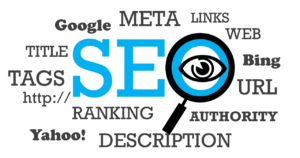Enter search engine marketing (SEM), In the ever-evolving digital landscape, businesses are constantly searching for ways to stand out. a powerful tool that can elevate your brand above the noise and drive targeted traffic to your website. With more consumers turning to online searches before making purchasing decisions, harnessing the full potential of SEM is essential for any business looking to thrive.
But what exactly is SEM? How can it benefit your organization? And most importantly, how do you create an effective strategy that yields results? Whether you’re a seasoned marketer or just dipping your toes into digital advertising, mastering these principles will set you on the path to success. Let’s dive into ten essential tips that will help you navigate the world of search engine marketing with confidence and clarity.
Understanding Search Engine Marketing (SEM)

Search engine marketing (SEM) encompasses all the strategies aimed at increasing a website’s visibility on search engines. It involves paid advertising, primarily through pay-per-click (PPC) campaigns, where businesses bid on keywords to display their ads.
At its core, SEM connects users with relevant content based on their search queries. When someone types in a keyword, algorithms work tirelessly to show them the most pertinent results—this is where your ad comes into play.
Understanding SEM means grasping how different platforms like Google Ads operate. Knowing the intricacies of ad auctions and quality scores can significantly impact your campaign success.
Moreover, SEM isn’t just about immediate visibility; it also creates opportunities for brand recognition and audience engagement over time. By leveraging these techniques effectively, you can capture attention right when potential customers are searching for services or products like yours.
The Importance of SEM for Businesses
In today’s digital landscape, search engine marketing (SEM) plays a pivotal role for businesses striving to thrive. With millions of searches happening every second, the potential audience is vast. Capturing attention through paid advertisements can lead to rapidly increased visibility.
Businesses that invest in SEM often see immediate returns on their advertising spend. Unlike traditional marketing methods, SEM allows precise targeting based on user behavior and preferences. This means your message reaches those who are already interested in your products or services.
Moreover, it provides measurable results. You can analyze metrics like click-through rates and conversion rates easily. This data empowers businesses to refine strategies continually.
Staying relevant is vital as competition intensifies online. A well-executed SEM strategy helps brands maintain a strong presence amid the noise, ensuring they remain top-of-mind when consumers are ready to make purchasing decisions.
Setting Goals for Your SEM Campaign

Setting goals for your SEM campaign is crucial to its success. Without clear objectives, it’s easy to lose focus and direction.
Start by identifying what you want to achieve. Are you aiming for increased website traffic, higher conversion rates, or brand awareness? Each goal requires a different approach and strategy.
Make your goals SMART: Specific, Measurable, Achievable, Relevant, and Time-bound. This framework helps clarify your targets and keeps progress on track.
Consider the metrics that will indicate success. Will you measure clicks, impressions, or return on ad spend? Knowing these details can guide optimization efforts throughout the campaign.
Be flexible in adjusting your goals as needed. The digital landscape changes rapidly; staying adaptable ensures you’re always moving toward meaningful results.
Choosing the Right Keywords
Choosing the right keywords is crucial for effective search engine marketing. It starts with understanding your audience and what they are searching for.
Think about their pain points and interests. This insight will help you identify relevant terms that resonate. Use tools like Google Keyword Planner or SEMrush to find popular searches related to your business.
Consider both short-tail and long-tail keywords. Short-tail keywords attract broad traffic, while long-tails offer more targeted visitors who are closer to making a purchase decision.
Don’t forget about competition analysis. Look at what successful competitors are using, but strive for originality in your keyword strategy.
Regularly revisit and refine your list too. Search trends change, so staying updated will keep you ahead in the game of search engine marketing.
Creating Effective Ad Copy

Creating effective ad copy is a vital part of successful search engine marketing. It’s your first chance to grab attention and entice clicks.
Begin with a strong headline. This should be compelling enough to make users stop scrolling. Use action words that inspire urgency or curiosity.
Next, focus on the benefits. Highlight what sets your product apart from competitors. People want solutions, so clearly state how you can meet their needs.
Keep it concise and clear. Avoid jargon that might confuse potential customers. Simple language can resonate more deeply than complex phrases.
Don’t forget a call-to-action (CTA). Direct users on what steps they should take next—be it “Learn More,” “Shop Now,” or “Get Started Today.”
Test different versions of your copy too; A/B testing can reveal which messages truly connect with your audience and drive better results, enhancing overall campaign effectiveness.
Utilizing Ad Extensions
Ad extensions are powerful tools in search engine marketing. They enhance your ads and provide additional information that can engage potential customers.
Using ad extensions allows you to include extra links, location details, or call buttons. This added content makes your ads more appealing and informative. It encourages users to click through.
There are different types of ad extensions available—sitelink, callout, structured snippets, and more. Each serves a unique purpose tailored to your business needs.
By showcasing relevant information directly in the ad, you increase the likelihood of attracting qualified leads. More visibility means a higher chance for conversions.
Implementing these features doesn’t just enrich user experience; it often results in improved quality scores too. A better score can lower your cost-per-click while increasing your ad’s position on search result pages.
Experiment with various combinations of extensions to discover what resonates best with your audience.
Targeting the Right Audience

Targeting the right audience is crucial in search engine marketing. Understanding who your customers are helps tailor your campaigns effectively.
Start by creating buyer personas. These profiles should represent your ideal customers, including demographics, interests, and online behaviors. This will guide your ad placements and messaging.
Utilize tools like Google Analytics to gather data on user behavior. Analyze which segments engage with your content or ads most frequently.
Additionally, consider using remarketing strategies to re-engage users who’ve previously interacted with your brand but did not convert. This keeps your business fresh in their minds.
Don’t shy away from A/B testing different targeting options. Experimentation can reveal unexpected insights about what resonates best with various audiences and refine your approach for maximum impact.
Tracking and Analyzing Results
Tracking and analyzing results is crucial in search engine marketing. It helps you understand what strategies are working and which ones need adjustment.
Start by setting up tracking tools, such as Google Analytics or SEMrush. These platforms provide insights into user behavior and conversion rates. You can see which ads drive traffic to your site and how visitors engage with your content.
Pay attention to key metrics like click-through rates (CTR) and cost per acquisition (CPA). These figures reveal the effectiveness of your campaigns. A high CTR indicates that your ad copy resonates with users, while a lower CPA shows you’re acquiring customers efficiently.
Regularly analyze this data to make informed decisions about future campaigns. Adjusting bids, refining keywords, or enhancing ad copy based on performance can lead to better results over time. Experimentation combined with thorough analysis will help elevate your search engine marketing efforts significantly.
Staying Competitive in the Landscape of SEM

Staying competitive in the landscape of search engine marketing requires constant adaptation. The digital environment shifts quickly, and so should your strategies. Monitor industry trends regularly to stay ahead.
Competitor analysis is vital. Keep an eye on their ad copy, keywords, and targeting strategies. This will help you refine your approach and find gaps in the market.
Experimentation also plays a key role. Test new ad formats or bidding strategies to discover what resonates with your audience. A/B testing can provide valuable insights that lead to better performance.
Don’t forget about continuous learning. Attend webinars, read relevant blogs, and engage with online communities focused on SEM practices.
Utilizing automation tools can streamline processes while enhancing efficiency. Leverage data-driven decisions for improved outcomes as you navigate this dynamic field of marketing.
Conclusion: The Power of SEM for Businesses
The world of search engine marketing is vast and ever-changing. Businesses that master it can reap significant rewards. With effective SEM strategies in place, companies can increase visibility, drive traffic, and enhance conversion rates.
Understanding your audience and crafting tailored campaigns will set you apart from the competition. Investing time in keyword research ensures that you’re targeting the right terms to attract potential customers.
Creating compelling ad copy with relevant extensions adds value to your advertisements and encourages clicks. Monitoring performance through analytics allows for continuous improvement, ensuring better returns on investment over time.
The landscape of SEM is competitive but also filled with opportunities. By staying informed about trends and best practices, businesses can adapt quickly and thrive in this dynamic environment.
Harnessing search engine marketing’s power not only elevates brand presence but also fosters growth across various channels. Embracing these strategies could very well be the key to unlocking new levels of success for your business.






